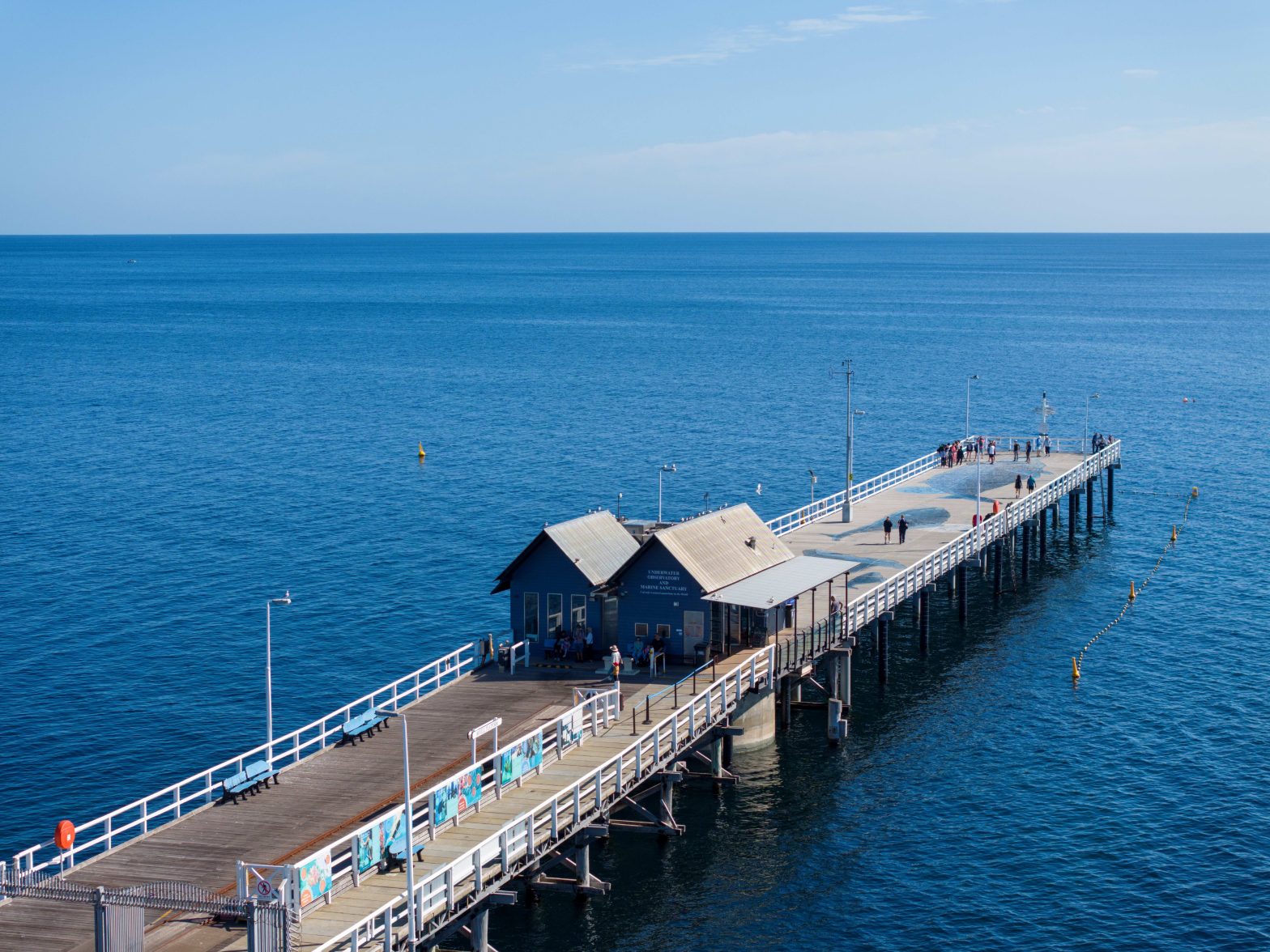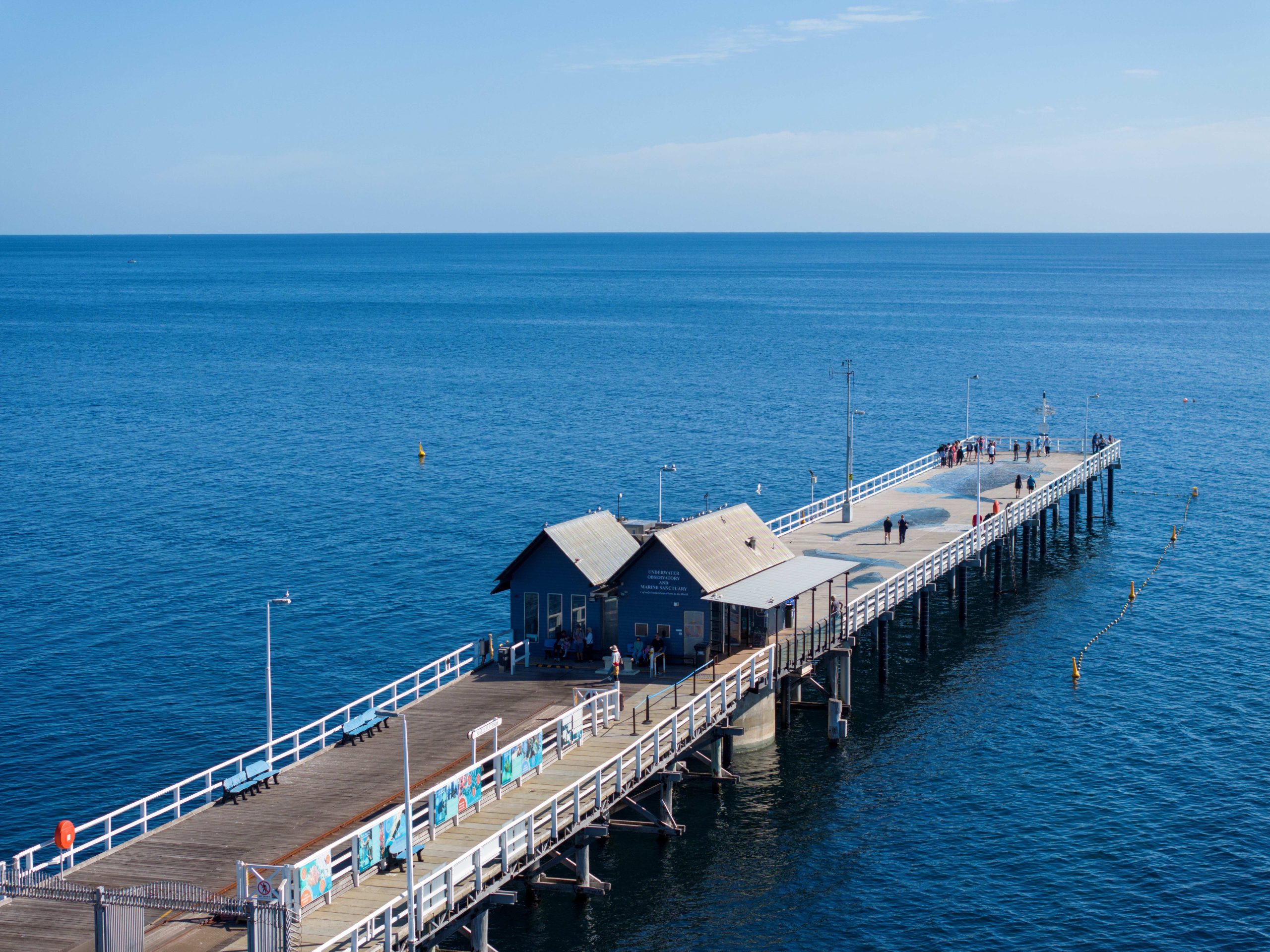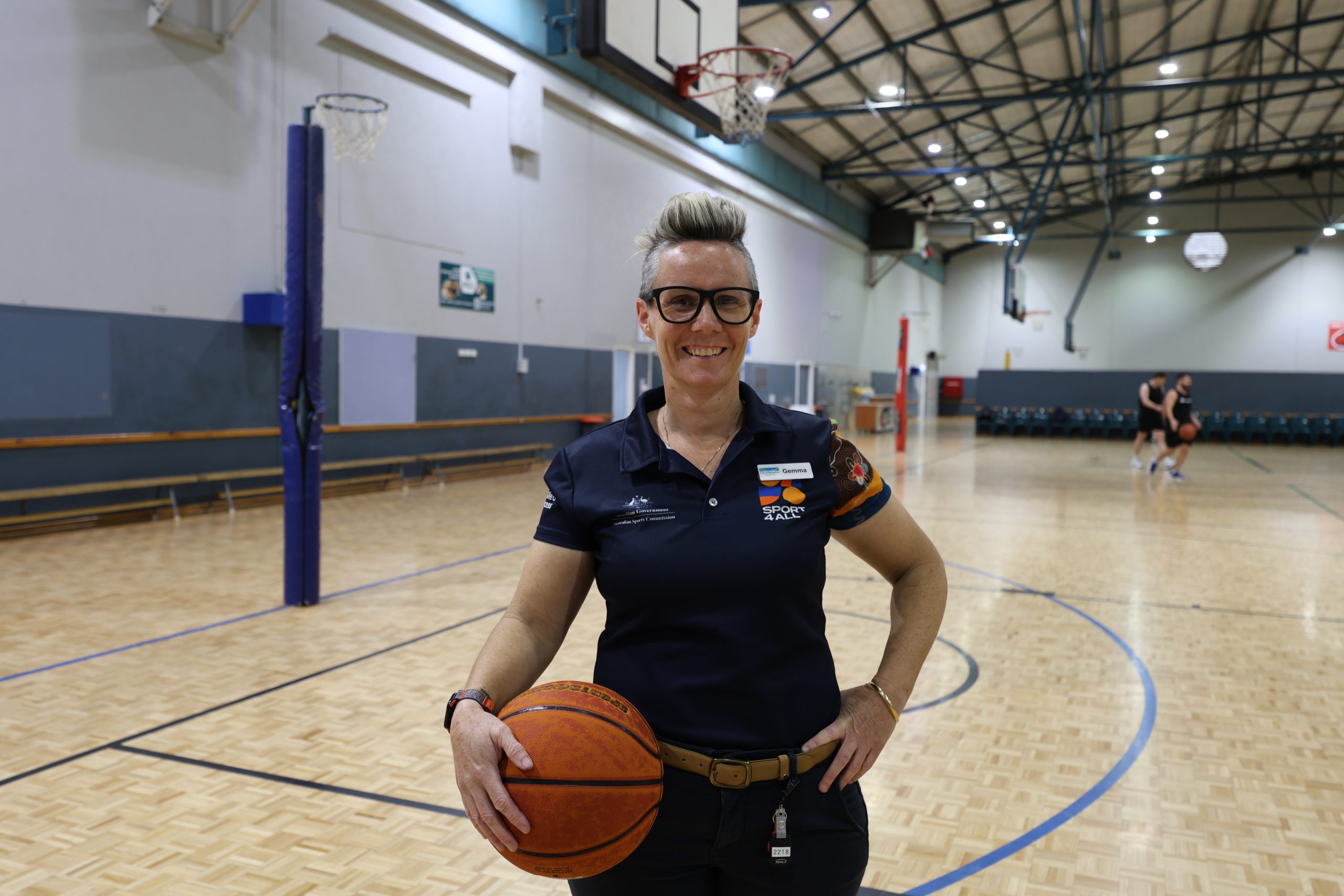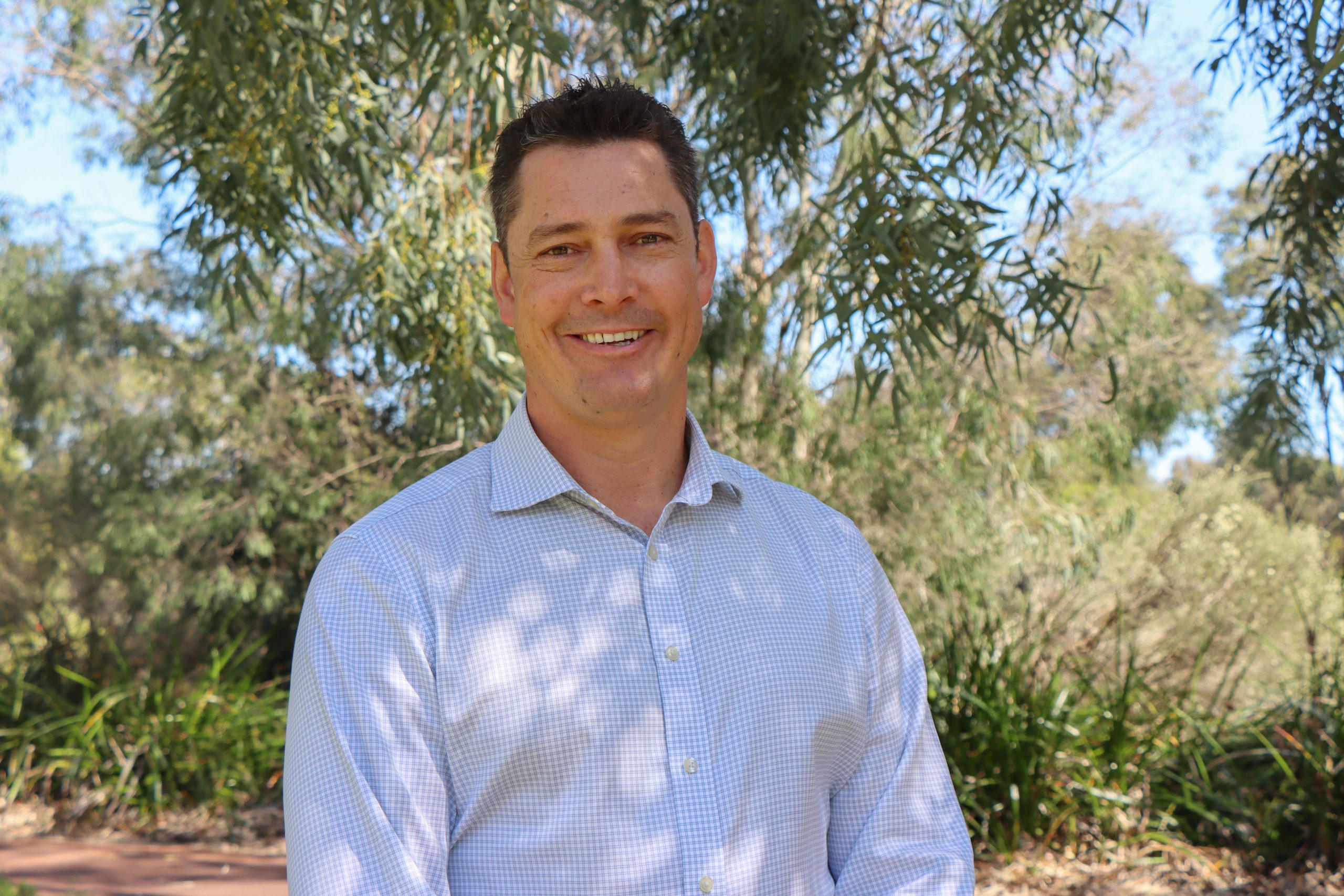Next leaps for South West endangered frog project
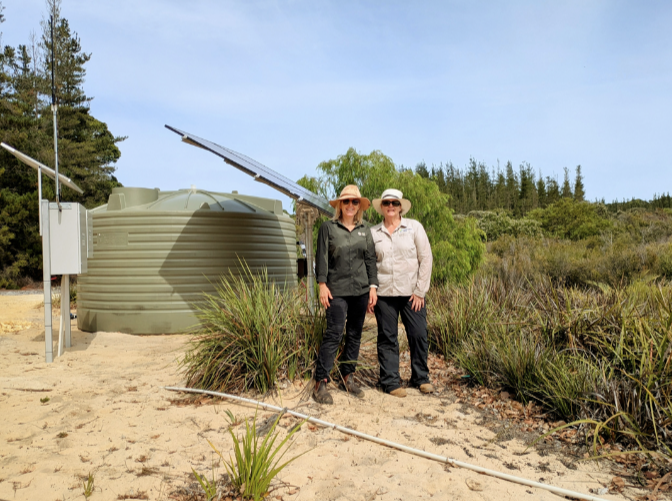
South West NRM Project Manager Threatened Species Lorraine Duffy and Program Manager Environment Robyn Nicholas in front of equipment associated with rehydration of drying creeklines for white-bellied frogs.
A milestone has been reached in South West NRM’s efforts to rescue the tiny and critically-endangered white-bellied frog from extinction.
With its partners and funding from the Australian Government, the region’s peak environmental organisation is currently delivering two projects designed to grow diminishing populations of the frog which now only has a 2km area of suitable habitat near Margaret River.
One project involves working with the Department of Biodiversity, Conservation Attractions on a novel approach to rehydrate creek beds which have at times, become too dry for the frogs to breed.
Last month the automatic irrigation system – consisting of a 23,000L water tank, solar-powered pump, irrigation controller and an intricate maze of delicately installed reticulation pipe and sprinklers woven into the fragile ecosystem – was activated.
In addition, the first dataset on soil moisture levels being monitored at the project site by a series of sensors was transferred via satellite to our project team who are using specialist software to remotely and continuously track conditions.
South West NRM CEO Dr Manda Page said the aim of rehydrating the area was to maintain moisture in the shallow soil layers where the frogs live to extend their life expectancy.
“Drying conditions in our South West are having an impact on survival rates of this frog species,” Dr Page said.
“With the sprinklers being turned on and the soil conditions now being monitored remotely, we have achieved the purpose of this project.
“It will be some time until we know what impact this rehydration method is having on the future of the white-bellied frog. But that is the nature of environmental science. It takes time, patience and perseverance to see results and create positive change.”
Soil conditions will be compared to an adjacent area where monitoring is also occurring but not being supplemented with reticulation.
Dr Page acknowledged project partners, contractors and supporting organisations for their willingness to come together, problem solve and get the job done on what has so far been an incredibly complex operation.

“DBCA provided technical assistance for placement of irrigation and monitoring sensors, Water Corporation supplied a large source of tested, fresh water; the Shire of Augusta-Margaret River advised on maintenance of fire breaks and specifications for the truck turnaround; the Karridale and Witchcliffe Volunteer Bushfire Brigade used their tanker to cart the water to site and our contractors Flow Earthworks and Think Water Busselton have really gone the extra mile,” Dr Page said.
“You can be assured this was not your average garden reticulation installation, but the level of attention paid by all who worked at the site to minimising disturbance in this pristine environment has been seriously remarkable.
“While at times challenging, everyone has been united in their commitment to helping these tiny frogs.”
This first project received grant funding from the Australian Government’s Saving Native Species Program.
The second project, funded by the Australian Government Natural Heritage Trust involves identifying new habitats for white-bellied frogs and testing suitability for potential translocation of new populations bred by Perth Zoo.
South West NRM will seek to engage with Traditional Land Owners in delivery of the project outcomes.












